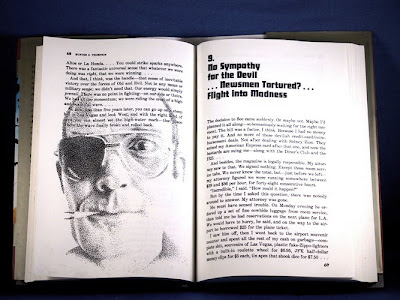
My new 'wishlist' item is a piece, any piece, from Moritz Glik's latest jewelry collection, Kaleidoscope. A line of fine jewelry that takes ordinarily traditionally set gemstones and uses them in a very unconventional way. Earrings, necklaces, pendants and cuffs in which loose diamonds and gems of various colors and cuts tumble around in settings that are unlike most I have seen before.


above: Moritz Glik "Kaleidoscope" Textured Oxidized Silver, 18k Gold, and Diamond Cuff Bracelet
The Brazilian born shoe designer turned jeweler places loose gemstones of various cuts and shards of gold inside a two faceted white sapphire crystals, secures them with a bezel and then mounts the pieces as pendants, earrings, bracelets and necklaces.

Some pieces are coupled with traditionally set stones in the bezel, others are flush mounted in simpler settings. Diamonds of all colors, polished and rough, colored sapphires, emeralds, rubies and even shards of 18k gold are used in the creations which are set in everything from platinum to pink gold to oxidized silver.
Rings:











The only consistency within the pieces of the Kaleidoscope collection is the idea of the loose stones tumbling around within the encased crystal. Otherwise the collection varies in terms of cuts, colors and settings.
Bracelets:





There's something to appeal to almost everyone's taste - Modern, Victorian, Art Deco, Edwardian, simple, ornate, monochromatic or colorful. What may not appeal to everyone is the price.
Earrings:













Pendants and Necklaces:






Glik's signature collection creates the illusion of diamonds and precious stones floating within their settings. Many of his pieces are fluid, assuming their shape only when worn. Each earring, necklace, bracelet and ring is meticulously handcrafted by Glik, and he often works with clients to create a unique design solely for them. His latest collection, “Kaleidoscope”, consists of floating diamonds enclosed within double white sapphires that are in fluid motion for which he won the Best Diamond Piece at the Couture Show in Las Vegas in 2011 and was also nominated in 2009 and 2010.

above: Moritz Glik
His jewelry is sold in New York City, and various other cities around the world. His designs have been featured in magazines such as W Magazine, British Vogue, InStyle, Cosmopolitan, Oprah Magazine, New York Magazine, Black Book, TimeOut NY, Gotham , Cigar Aficianado., Noise Magazine, Prestige and many others. Glik’s designs have been seen on celebrities such as Kate Hudson, Rhiana, Mila Kunis, Nicole Kidman, Marcia Gay Harden, Jennifer Lopez, Bebel Gilberto, Penelope Cruz, Christina Applegate, Goldie Hawn, Shakira, and the Dixie Chicks. And recently a commissioned piece for Justin Bieber. store locations
Moritz Glik
phone: 212 679 0948
moritz@moritzglik.com
Fragments Showroom
110 Greene Street
New York, NY 10012
Phone: 212 226 4955
Fax: 212 226 4199

Buy Moritz Glik Jewelry Here












































